How do you protect yourself and others from COVID-19?
03/18/2020
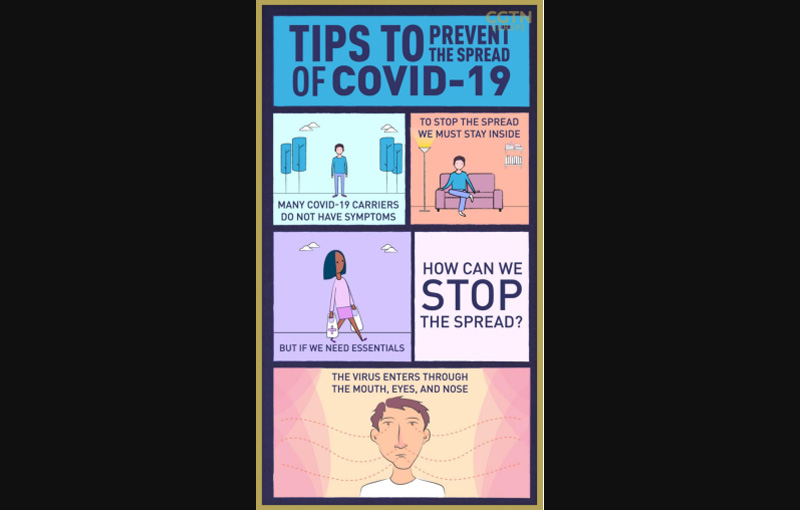
With COVID-19 cases and deaths on the up worldwide, a vital question for many people is: How can I protect myself from catching this virus?
Well, put simply, the best way is to self-isolate and listen to government advice on social distancing and quarantine measures.
These will differ in severity depending on what country you are in, but most countries now have put in place some kind of lockdown measures that you should follow, not only to protect yourself but also to protect others.
If you do need to go out, whether that be for essential work, to purchase essential goods from the supermarket or to buy medicine, here are some tips to best protect yourself as well as others from COVID-19.
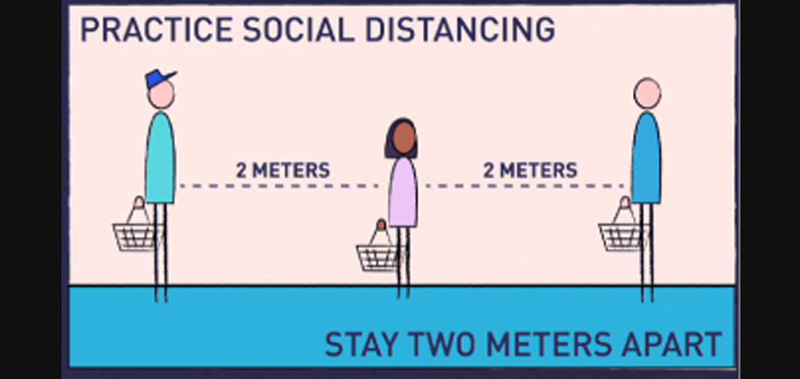
Maintain social distancing
Maintain at least a two-meter distance between yourself and anyone else, especially if they are coughing or sneezing.
The reason for this is if someone coughs or sneezes, they spray small liquid droplets from their nose or mouth which may contain the virus. If you are too close you may breathe in the droplets.
Avoid physical contact when greeting others
Global health experts have said that hand hygiene is one of the most important and effective ways to contain the spread of COVID-19, as the virus can be transmitted when droplets enter our mouth, eyes or nose, which often happens through our hands.
The World Health Organization ( WHO ) recommends avoiding shaking hands with others as the virus could easily be spread by shaking hands. Alternatives include a wave, a nod or a bow instead.
The UK's Prince Charles has also been seen using the namaste greeting instead of the customary handshake.
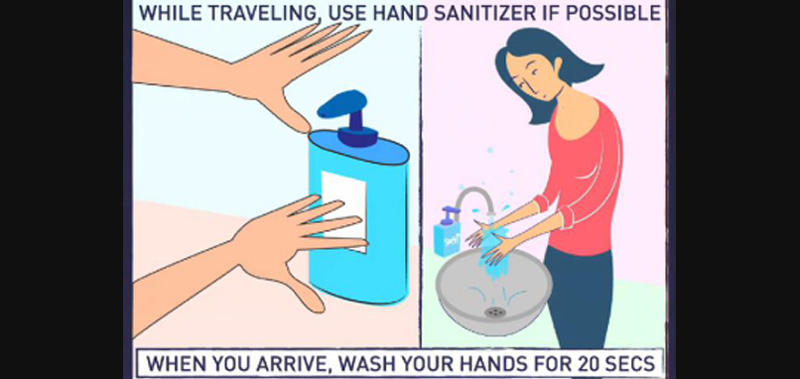
Apply hand sanitizer regularly
Always keep a bottle of hand sanitizer available in your home as well as one in your car if you do have to go out and don't have access to handing washing facilities immediately.
If you don't have hand sanitizer and can't find any in the shops, follow our simple guide on how to make your own.
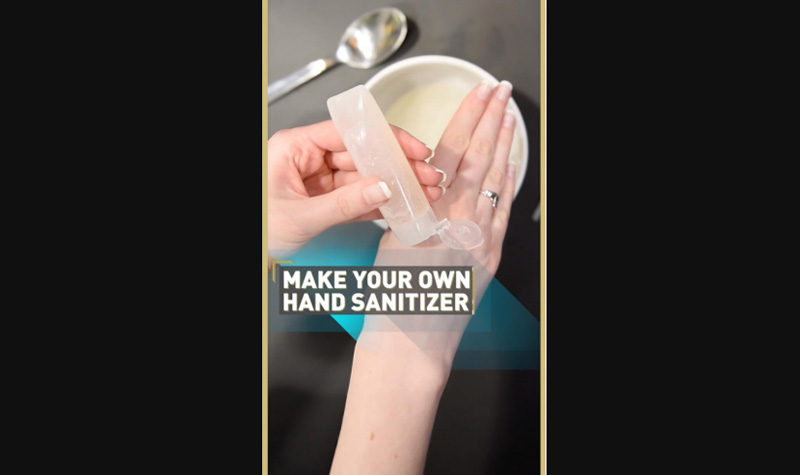
Wash your hands frequently with soap for 20 seconds
This is important, especially if you do go out and come into contact with people or objects you are not familiar with.
The WHO says that washing your hands is a more effective way of offering protection than wearing rubber gloves. This is because if you touch your face after using the gloves, the contamination goes from your glove to your face and therefore can infect you.
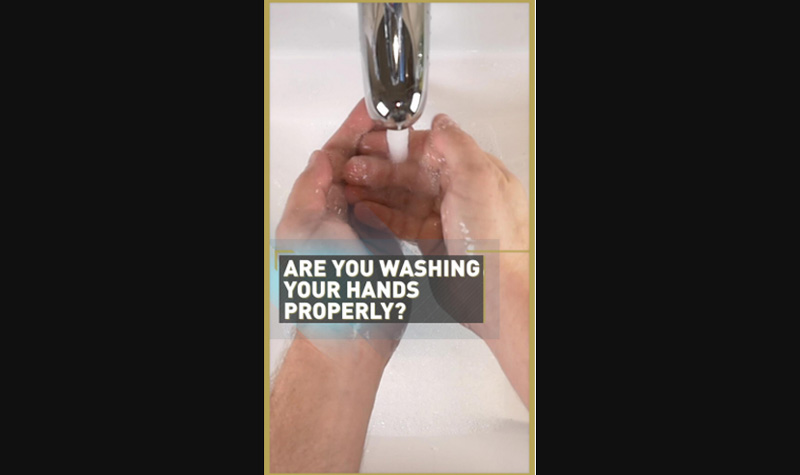
Make sure your face mask covers mouth and nose
If you choose to wear a face mask, make sure it covers your mouth and nose and not one or the other. Also avoid touching the mask once it's on and throw in the bin after a single use.
You should also wash your hands after removing the mask to make sure that any potential infections are prevented.
Avoid touching eyes, nose and mouth
Your hands touch many surfaces and can pick up viruses easily. If you touch your eyes, nose and mouth with your hands then the virus can be transferred. It can then enter the body and make you sick.
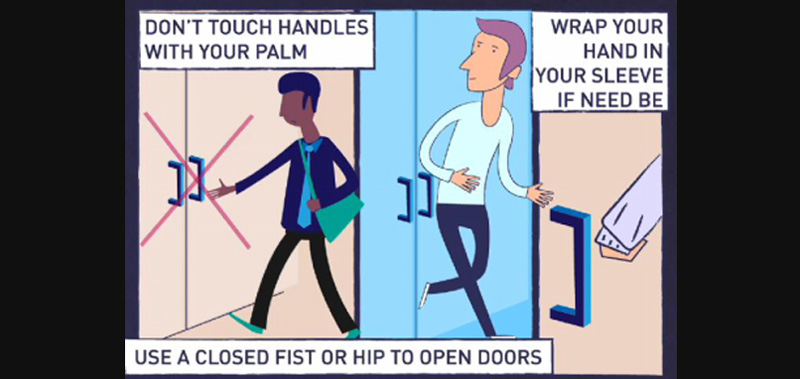
Use a closed fist or hip to open doors
If you need to open doors, try not to grasp the handle with just your open palm. Instead use a closed fist or your hip, or at least wrap your hand in the end of your sleeve. This is especially important on bathroom and commercial doors, where germs are more easily spread.
You should also use your knuckle or elbow to touch communal objects such as light switches and elevator buttons could be used by many before and after yourself. This will reduce the chances of the infection spreading.
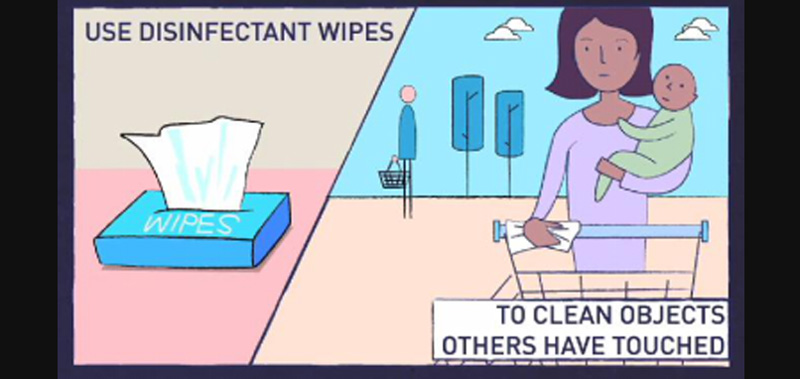
Use disinfectant wipes
This is especially important on communal items such as shopping carts at supermarkets: make sure you wipe the handle as well as the child's seat ( if you have one ) before use.
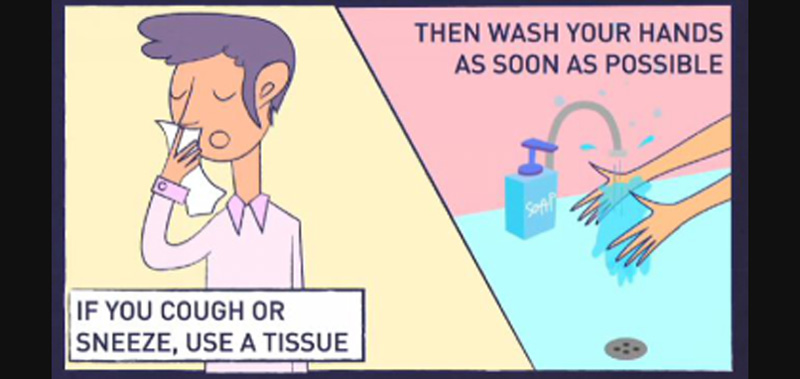
Cough or sneeze into a tissue where possible
If you do not have a tissue then the next best alternative is to use your elbow, but do not cough or sneeze into your hands. The clothing you cough into could contain the virus that can be passed to others for up to a week after.
Avoid travel if you have a fever and cough
The WHO have said anyone showing symptoms of COVID-19 should not travel. Instead they should seek medical care and share previous travel history with your GP.

